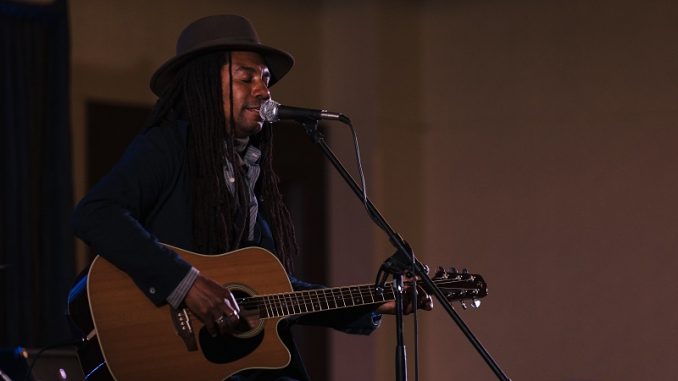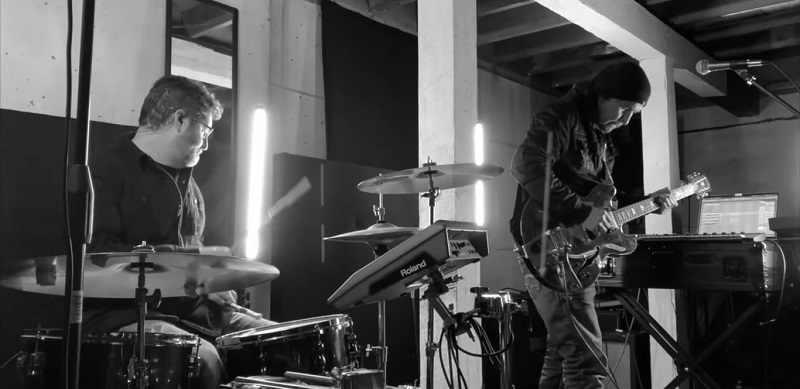
Unfortunately, the petty cash box was somewhat depleted and so it was not possible for Americana UK to attend the annual Folk Alliance International conference in Kansas City in-person. Fortunately, however, the event which ran from May 18th – 22nd, was being run as a semi-hybrid of in-person and online. This allowed attendance at a good number of the music showcases either in real-time, as prerecorded all live online presentations or at leisure when the truly live music was uploaded as a recording. Additionally, the awards show part of the conference could be attended live and a number of the discussion panels were also available online. In fact the main thing that was missing, perhaps not surprisingly, was the ability to attend networking events. For UK attendees there was also the additional problem of the time shift – Kansas runs to Central Time which means a 6-hour time shift compared to the UK and not in the “good way” – making afternoon events evening events and the evening events turned into early morning events and early morning events inevitably happened when this attendee eventually broke off to sleep.
Other than the obvious musical side of the conference what else was going on? There were any number of sessions focusing on the professional part of being a footloose wandering troubadour because even footloose wandering troubadours need to be able to effortlessly interact with their audiences, arrange radio publicity, find a manager and build a support network of similarly minded footloose wandering troubadours. As well as these sessions aimed at making the working life work for a musician there were also more general sessions focusing in on specific aspects of folk music, including an excellent keynote interview with Shirley Collins focusing on her work with Alan Lomax in gathering song and other cultural material from the peoples of the Appalachians in the 1950s. And what a time that was – recording shape note music in isolated forest gatherings where the pair were viewed with great suspicion and in fact felt at times that their lives were at risk. Shirley recalled it all in great detail, and it was clearly a seminal period of her life. It was also quite literally a window into a time that has now gone – so she could speak of the mysterious music she actually heard and how that balanced against the threatening nature of the congregations’ leader and the fear that was induced when they burnt crosses. Although as she noted they weren’t the Klan “that was later”. An interesting aspect is that the pair attempted to record the material despite having been told not to, a subject which came up again in a discussion group on diversity where it was suggested that some community folk activity was too personal for an outsider to just record because they feel that it is important to do so. An interesting contrast reflecting changing times.
Diversity was a common theme across a number of the discussion groups that were available to the online viewer, And for anyone who is of the persuasion that this is self-indulgence and a distraction from” the music” well any such thoughts were erased in another of the keynote discussions where Dom Flemons (late of the Carolina Chocolate Drops) talked to Freeman Vines about his unique project of creating guitars carved from the wood of a tree that was used for lynchings. This has been the subject of a photographic documentation project which has culminated in the Hanging Tree Guitars book and the images show a range of electric guitar bodies that Freeman Vines has carved from this wood taking inspiration from what he feels is the pain fair and horror that has been imbued into this material. When he spoke of how the wood told him how to carve it and the horrific imagery that sometimes appeared and the strange tone of these guitars when completed it was as if the fantastic imagery of a folk ballad like ‘The Cruel Sister‘ had come jarringly and terrifyingly to life. And consider that phrase “a tree used for lynchings” – so, no, discussions of diversity and acceptance, and honesty about all the American peoples are certainly not out of place at an American Folk Music conference.
That though was the serious side of the conference and the other focus, as alluded to before was the musical showcases. And wow there certainly were a large number of these, far too many to actually get to all of them and certainly impossible for someone attending in person who would, though, have had the buzz of flitting from room to room catch all of those that they were interested in. And it was truly an International line-up – plenty of UK musicians such as John Smith and Chloe Foy, as well as North Americans and many from mainland Europe. Alongside well-known names such as Eliza Gilkyson, Diana Jones, Heidi Talbot, Danny Schmidt for example there was what can only really be described as a convention from the Tracks section – the likes of Abby Posner, Beth Bombara, Mama’s Broke, Willi Carlisle – as well as that wider folk banner that encompasses European folk traditions, blues, traditional music from Africa and Asia. In short exactly what you might expect from a collection of International Folk artists.
To comment on just a few of the showcases caught – Julian Taylor gave a warm and engaging set based mostly around his well-received solo album ‘The Ridge‘, but also with a few glimpses of his new album. Grosse Isle – a Canadian trio who mix a repertoire of Quebecois and Irish music that goes to prove that any combination of fiddle, guitar, keyboards and uilleann pipes is going to sound just wonderful.

Vigüela are a Spanish folk band from Toledo that can move in an instant from just gentle stringed instruments to a full-force gale of combined vocals. If music’s role is ever to not just grab at your attention but to demand that the next half-hour will be given up entirely to listening then that is what Vigüela do. This is music played and sung as if the participants’ lives depend upon it. No less sincere, but way at the other end of the laid-back folk spectrum were Australia’s Heart Collectors whose music is like a gentle healing balm.

The prize for stunning intensity would have to go to Digawolf, with Diga making music that bridges the gap between modernity and tradition and is inspired by his Tlicho culture.

Not perhaps everyone’s definition of folk – and that’s fine – but it was music that again did that important thing: makes the listener actually listen. Not, as would be so easy to do in an online interaction, half listen whilst wandering around doing something else at the same time but instead, like at an actual gig, pay attention because this is something that wants, nay needs, to be absorbed.
https://www.youtube.com/watch?v=PthLc6jhJvM
So overall the Folk Alliance International 34th Annual Conference was a fascinating way to spend a time-shifted long weekend, with interesting panel discussions on folk music topics and a plethora of musical showcases.In person one can only assume it’s even better with the added networking with musicians, agents, festival bookers, and the in-person career-building sessions. The next conference runs February 1st-5th 2023in Kansas City.
Thanks to Nick Loss-Eaton, FAI Publicist for the Conference, for arranging Americana UK’s attendance.


